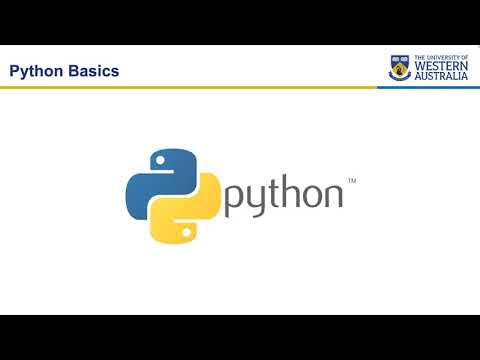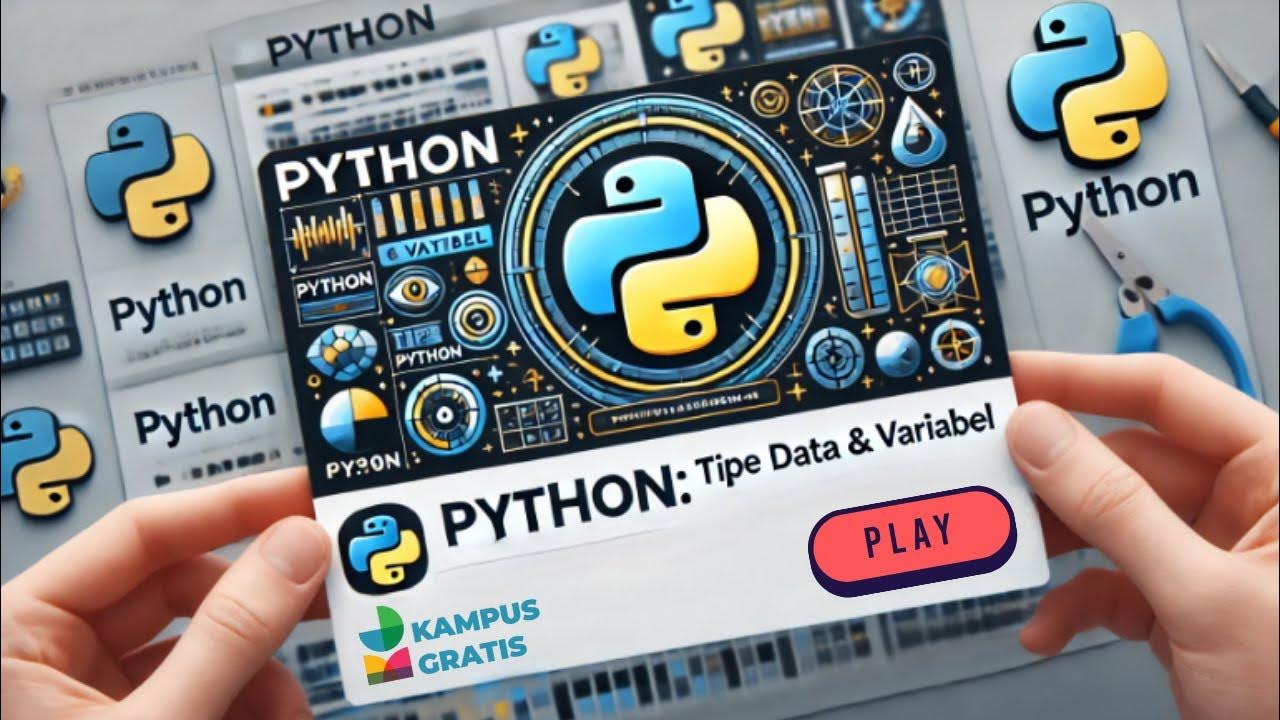Variabel, tipe data dan operasi dasar
Summary
TLDRThis video introduces the basics of programming, focusing on variables, data types, and fundamental operations in Python. The instructor explains what variables are, using the analogy of a bag that stores items like pencils and books. It also covers various data types such as integers, floats, strings, and booleans, with examples of how each is used in Python. The video touches on simple arithmetic operations, string manipulation, and logical operations, all essential for building Python programs. The session is designed for beginners, providing a solid foundation for further learning in programming.
Takeaways
- 📚 The video introduces the basics of programming, focusing on variables, data types, and basic operations in Python.
- 💡 A variable is like a storage location for a value, similar to a bag that can hold different items like pens, books, or laptops.
- 🔢 Python variables can store various types of data such as integers (whole numbers) and floating-point numbers (decimal numbers).
- 🔠 Strings are data that represent text, such as 'Hello World' or a person's name.
- ✔️ Boolean data types represent 'True' or 'False' values, often used in logic-based programming.
- ➕ The video explains basic arithmetic operations in Python, including addition, subtraction, multiplication, and division.
- 🧮 Numeric data types in Python are essential for calculations and can be integers or floats depending on the need.
- 📝 The video introduces the use of logical operators like 'AND', 'OR', and 'NOT' to perform logic-based operations.
- 🔗 String variables are created using single, double, or triple quotes, and their usage varies depending on the context.
- 🔄 There is a mention of programming loops and control flow (like 'for', 'if-else'), which will be covered in a future video.
Q & A
What is the main topic of the video?
-The main topic of the video is an introduction to programming basics, focusing on variables, data types, and basic operations in Python.
What is a variable in programming?
-A variable is a named storage location where we can save a value that can be referenced or manipulated in a program.
What are the examples of data types mentioned in the video?
-The video mentions integer, float, string, and boolean as examples of data types.
What is an integer in programming?
-An integer is a whole number without a decimal point, such as 5 or 10.
What is a float in programming?
-A float is a number with a decimal point, such as 3.14 or 0.001.
What is a string in programming?
-A string is a sequence of characters used to represent text, such as 'hello world' or 'John'.
What is a boolean in programming?
-A boolean is a data type that has only two possible values: true or false.
What is an example of a basic operation in Python?
-An example of a basic operation in Python is adding two variables, such as 'x + y', and printing the result.
What are some of the arithmetic operations mentioned in the video?
-The video mentions addition, subtraction, multiplication, division, and modulus as some of the arithmetic operations.
What is the role of the Jupyter environment in Python programming?
-The Jupyter environment is a tool used for interactive computing in Python, allowing users to write and execute code in a notebook interface.
What is the significance of logical operators in programming?
-Logical operators are used to perform logical operations such as AND, OR, NOT, and comparison operations to evaluate conditions in a program.
Outlines

هذا القسم متوفر فقط للمشتركين. يرجى الترقية للوصول إلى هذه الميزة.
قم بالترقية الآنMindmap

هذا القسم متوفر فقط للمشتركين. يرجى الترقية للوصول إلى هذه الميزة.
قم بالترقية الآنKeywords

هذا القسم متوفر فقط للمشتركين. يرجى الترقية للوصول إلى هذه الميزة.
قم بالترقية الآنHighlights

هذا القسم متوفر فقط للمشتركين. يرجى الترقية للوصول إلى هذه الميزة.
قم بالترقية الآنTranscripts

هذا القسم متوفر فقط للمشتركين. يرجى الترقية للوصول إلى هذه الميزة.
قم بالترقية الآن5.0 / 5 (0 votes)






